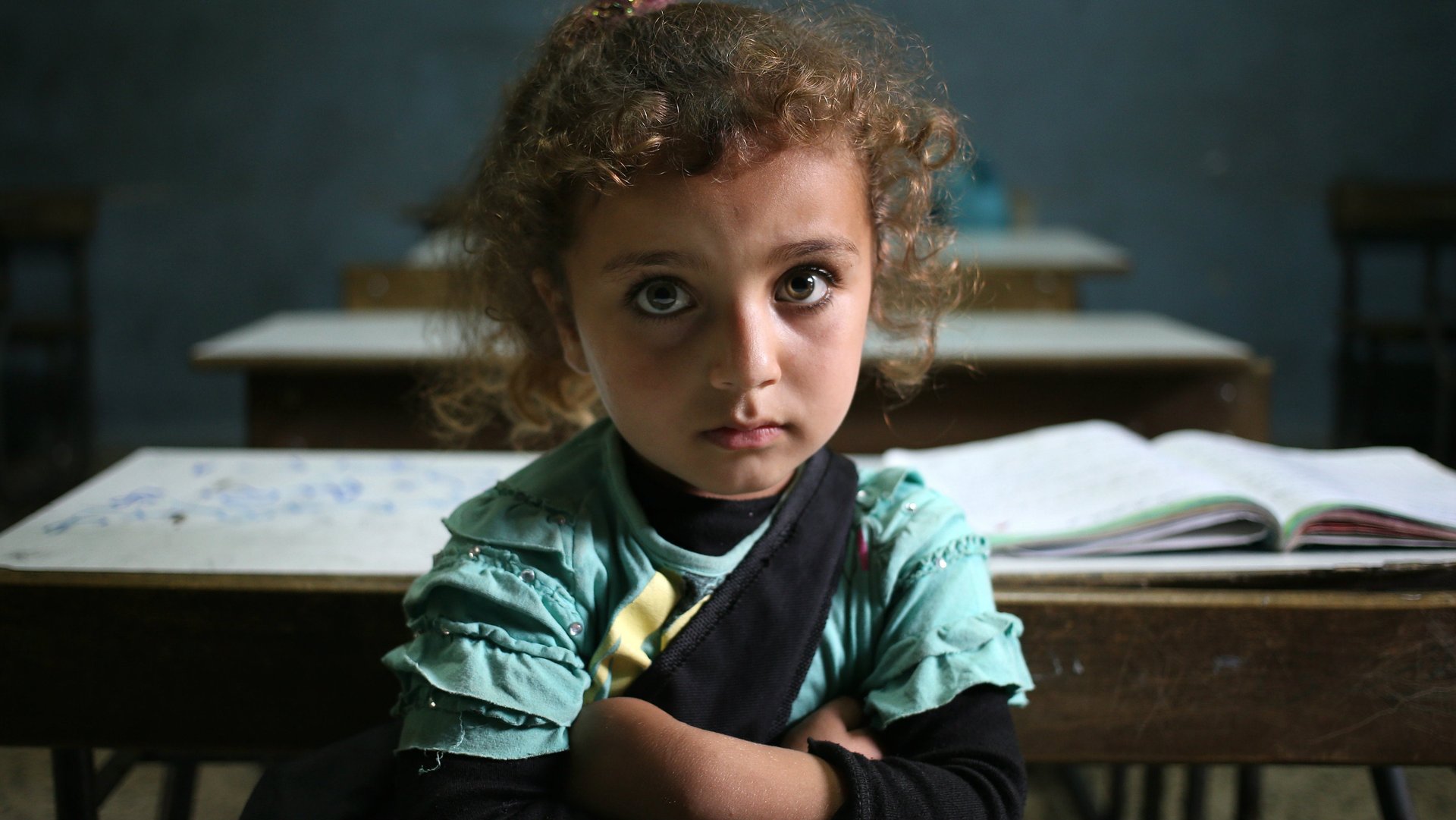Over 13.5 million children can’t go to school because of wars in the Arab world
The heartbreaking image of three-year old Aylan Kurdi lying face down washed up on a Turkish beach has triggered an international foreign policy re-examination of the ongoing conflicts in the Middle East and North Africa.


The heartbreaking image of three-year old Aylan Kurdi lying face down washed up on a Turkish beach has triggered an international foreign policy re-examination of the ongoing conflicts in the Middle East and North Africa.
Over 13.5 million Arab children have also had their futures thrown into jeopardy over the past four years because they cannot go to schools according to a new report entitled Education under Fire. Across nine countries in the region, UNICEF researchers found that nearly 9,000 schools are out of operation because of political instability and intractable armed violence.
“A lot of the schools are out of use because as they are sheltering displaced families fleeing from conflicts. Sometimes up to nine families are sharing a classroom. This is because a lack of alternatives when it comes to refuges,” says Juliette Touma, UNICEF spokesperson in the Middle East & North Africa.
Touma also noted that schools have been actual targets of armed strikes where children and adults have died on site, most graphically exhibited in Gaza last summer where one UNRWA school was shelled by Israeli strikes killing 15 and wounding 200.
“We have also seen schools that have been taken over by different parties in different conflicts that have been turned into military bases or they have been turned into detention centres. They have effectively become prisons, we have seen this in Syria” she added.
The report contains testimonies from teachers and students who have been intimidated and witnessed their family members’ deaths. Yet, paradoxically it also notes amid the carnage that some schools are functioning in areas controlled by Islamic State of Iraq & the Levant (ISIL) with a revamped curriculum and terrifying restrictions for female students.
Sudan ravaged by decades of conflict and forgotten in media coverage of regional conflicts had the highest number of kids outside of the classroom with 3.1 million children not attending school regularly.
“People are going on these dangerous boat trips because they are seeking better opportunities for their children” Touma explained against a backdrop of images circulating of refugees from the Middle East crossing into European countries such as Hungary and Austria.
“There are a number of consequences on why need to put children back into school. Families don’t want to send their children out on the streets to make a better living or to join armed groups because of a lack of choices”.
There is a hopeful note though with children even under duress having a thirst for knowledge where 20% of the region’s populations are between the ages of 10-19. Jameela, a Yemeni teacher quoted in the report said, “I have seen children trying to write on the ground because they want to learn so much”.